For This Child We Prayed
| April 25, 2023Rebbe Abish Meir of Spinka meets the medic who saved his life
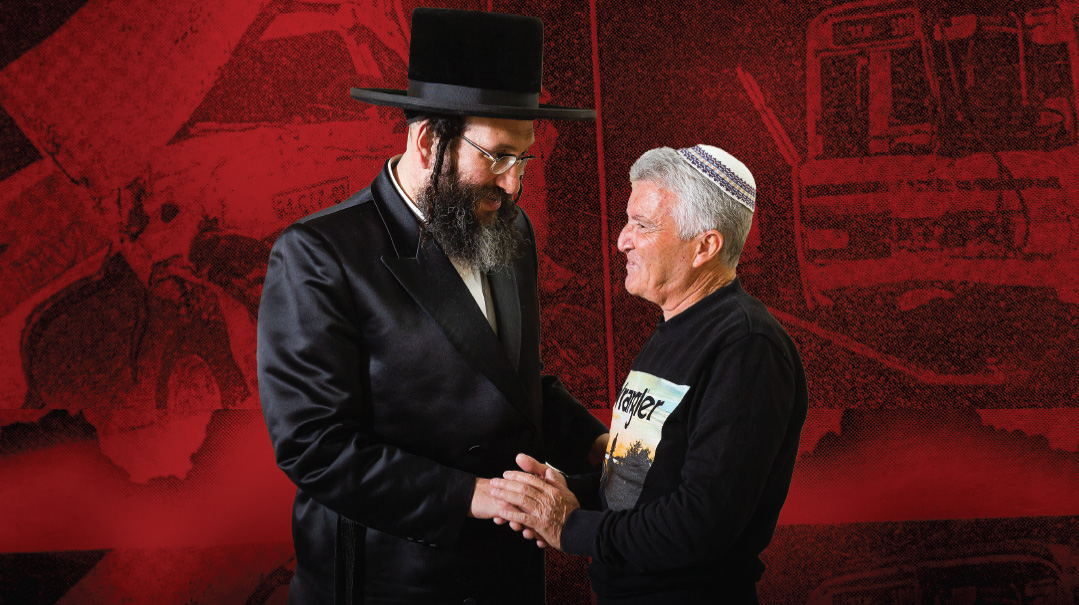
Photos: Elchanan Kotler
He was just ten years old when it happened, the horrifying car crash that took the lives of four rabbanim, including Rebbe Abish Meir’s own father, on the way back from the Baba Sali’s funeral 39 years ago. Three months after he was nearly left for dead, and having defied every medical prognosis, little Abish Meir stood up on his battered, shaky legs for the first time.
ITwas a rainy Sunday, 4 Shevat, 1984, and Shimon Yifrach’s shift as an ambulance driver for the Maged David Adom station in Ashdod’s Rova Daled had been pretty routine. It had been a stressful day for all emergency personnel: The holy 94-year-old Baba Sali — Rav Yisrael Abuchatzeira — had passed away the night before, and thousands upon thousands converged on his funeral in the southern town of Netivot. But so far there were no emergencies, and he hoped he’d get through the evening without too much excitement.
“But then the dispatcher’s voice came to life,” Shimon Yifrach remembers. “There had been a terrible accident on the highway that runs from Ashkelon to Bnei Brak just outside the Ashdod interchange, and when I asked for more information, she screamed, ‘Just go, just go!’ I immediately jumped into the ambulance with another volunteer and sped as fast as I could in the pouring rain with lots of fog, poor lighting and little visibility. On the way I was updated — a crash between a private car and an Egged bus. When I got to the scene of the accident, I saw a bus on the side of the road surrounded by several cars that had stopped, and dozens of people screaming and praying. All of them, including the mangled car, I’d later learn, were on the way back from the Baba Sali’s funeral.”
Today the highway has a proper meridian and better lighting, but at the time, there was just a lane divider that essentially disappeared in the fog. Apparently the Subaru driving in the direction of Bnei Brak crashed head-on with the fast-moving oncoming bus in the opposite direction. The Subaru didn’t have a chance. It was smashed under the grill of the bus, a crushed mass of metal.
The scene looked hopeless, but Shimon didn’t lose his cool. “It was pitch dark, and the only light I had was from the ambulance’s flashlight. I didn’t think anyone could have survived that crash, but I gently moved inside, somehow managing to open the back door: There were four adult men, mangled and heaped upon one another — to this day I get shivers just thinking about it. But I put myself on autopilot and checked each one — maybe there would somehow be a sign of life, but there was no pulse, nothing.
“And then, in the middle of this horrible carnage, I looked down on the floor of the car and couldn’t believe my eyes: Underneath the other bodies was a thin little boy of about 10, lying there covered in blood. I called on some others to help get him out, and ever so carefully we managed to extricate him and get him onto a stretcher. He looked dead, but when I checked him, I felt a pulse — very weak, but still there.”
Shimon worked like a man possessed as he began resuscitation. “I don’t really know why I made the effort. It was clear that the kid didn’t have a chance. It was a lost cause.” When he saw that there was some movement, he put an oxygen mask on his face, loaded him into the ambulance, and began speeding toward Barzilai Hospital in Ashkelon, just a few minutes’ drive away.
“Meet me at the entrance!” he screamed into his radio, connecting to the emergency personnel. If you wait until he comes into the ER, he’ll die in my hands!” A team was waiting outside, took the stretcher, and whisked the child to the trauma unit.
“I did mine, but afterward, I really wanted to find out what happened to this child. Did he live? Would he ever be more than a vegetable? I asked around at Barzilai and my MDA colleagues, but he’d been transferred from Barzilai to Hadassah Ein Karem in Jerusalem, and I never got a straight answer.”
Until he attended a hilula for the Baba Sali in 2008, 24 years later.
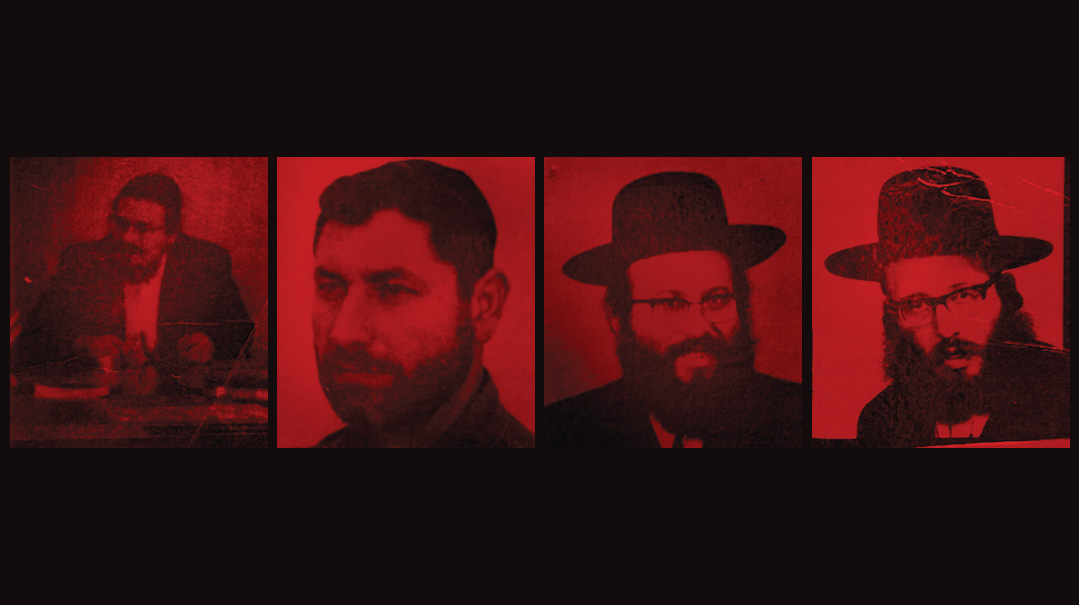
It was the first time he’d attended an event at the Yaldei Sagi VeYaakov youth center in Ashdod, although his two teenage sons had been regulars at the Torah shiurim there. That evening, in front of hundreds of guests and dozens of rabbanim who had come in honor of the Baba Sali zy”a, Shimon Yifrach took the mic for the first time, for some reason compelled to tell the story of the horrendous accident on the way back from the funeral so many years earlier.
“As I was telling the story, I related how I tried to save the little boy against all odds, and that to this day I don’t know if he ever survived,” Shimon Yifrach says.
“And then suddenly, opposite me, a fellow stands up and grabs the mic, telling me and the curious crowd, ‘I’m happy to report that the little boy is alive and well. In fact, he’s a rebbe and leader of a kehillah with a beis medrash in Bnei Brak.’ I was in shock. I couldn’t believe it. I grabbed the microphone back and announced, ‘I must meet this rebbe!’
“The good people from the youth center actually set up a meeting between Rebbe Abish Meir and me. I don’t think I’ve ever been to such an emotionally-charged reunion in my life. Later, we even traveled together to the site of the accident, and although the Rebbe didn’t have any real memories of it, I pointed out exactly where it happened. The Rebbe looked pained as he tried to conjure up the scene and his father’s visage. Raising his eyes heavenward, he said the brachah, ‘She’asah li neis bamakom hazeh.’ ”
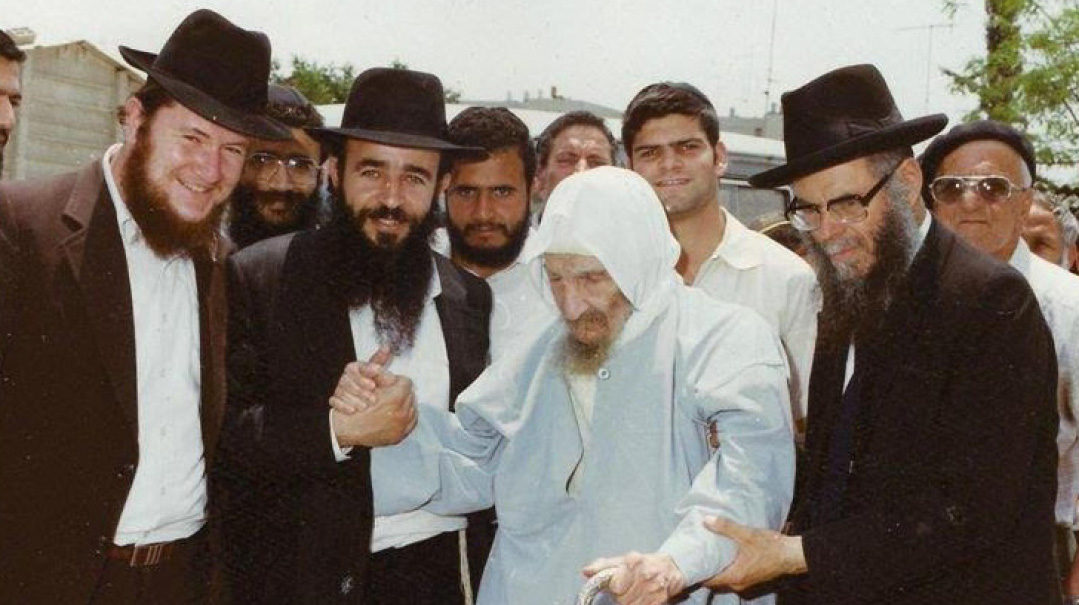
“When my father heard of the wondrous salvations promised by the Baba Sali, he decided he had to meet him.” The Baba Sali
T
he Spinka Rebbe of Ramat Aharon might not remember the details of the accident that took the lives of his father and three others, but although he was just a child, he well remembers the special connection between his father, Rav Yitzchak Eizik Weiss, and the Baba Sali.
(Rav Yitzchak Eizik a”h was the oldest son of the previous Spinka Rebbe of Boro Park/Bnei Brak, Rav Yaakov Yosef Weiss — author of the Siach Yaakov — who passed away in 1988, four years after the accident. Today’s rebbes — Rav Naftali Tzvi Weiss and Rav Yisrael Chaim Weiss [the Spinka-Donalov Rebbe] of Bnei Brak, and Rav Meir Eliezer Weiss of Boro Park and Jerusalem — are the Siach Yaakov’s surviving sons.)
How did this scion of the Spinka dynasty develop a strong bond with the Moroccan tzaddik from Netivot? Rav Eizik, as he was known, was born in 1951 in the US while his father was a rebbe in New York, and as a bochur learned in Telshe yeshivah, later returning to Eretz Yisrael with his family and soon becoming a rav of the Spinka chassidim in Bnei Brak while his father was the rebbe in both Bnei Brak and Boro Park.
Rav Eizik was a pious chassid, who was close to the Beis Yisrael of Gur and the Imrei Chaim of Vizhnitz.
“My father’s tefillos were renowned,” says Rebbe Abish Meir, his oldest son. “I was young, but I remember how he would cry while he davened. His tears would dampen his tallis, and sometimes my mother would have to hang it out in the sun to dry after he finished davening.”
The Rebbe says he believes the connection to the Baba Sali began with a visit of their cousin, the Komarna Rebbe ztz”l, to the Baba Sali. “He brought the Baba Sali several Kaballah seforim, including the Imrei Yosef series written by my zeide,” the Rebbe relates. “The Baba Sali connected very much to the holy sefer, and soon after became close to my father.”
They’d actually met once before: Someone in the extended Weiss family had suffered a stroke and his wife traveled to Netivot for a brachah from the Baba Sali. But when she arrived, she was told that the Baba Sali was closeted in his room and there was no way to see him. She was heartbroken, and began to weep so loudly that the Baba Sali opened the door to the room and asked what she wanted. She shared her story, and the Baba Sali gave her a bottle of water and told her to have her husband rub his hands and feet with the water every day. When the bottle would reach the halfway point, she should fill it up again. The woman asked: “And what will we do when the bottle finishes?” Replied the Baba Sali: “By then you won’t need anything. He will completely recover.” And that’s what happened.
“My father heard this story,” Rebbe Abish Meir relates, “and decided he needed to meet this baal mofeis. So that was their first encounter.”
Young Abish Meir would often accompany his father on the trips down south.
“On one of the visits,” the Rebbe recalls, “I think it was Shushan Purim of 1983, a little less than a year before his passing, we came to the house on Kalfon Street in Netivot. We found a long line of people waiting to get into the tzaddik’s house and stood on the side for a few minutes when, suddenly, the gabbai came out and announced, ‘Rav Weiss from Spinka will go in to the Rav.’ We could barely make our way through the crowd, some of whom grumbled at our protektsia, and when we entered, we saw the sefer Imrei Yosef open on the table. The Baba Sali pointed to it and said: ‘I knew you would come. I saw it in the sefer.’”
INthe last month of his life, the Baba Sali was closeted in his home, weak and fragile, and the members of his household noticed that he was fasting. When they asked him about it, the Baba Sali replied, “There was supposed to be a harsh decree, and much blood was supposed to be spilled. Baruch Hashem I was able to effect a yeshuah, but I will pay a steep price for it.” The household members looked at one another, and then he added, “I will take four people with me to Olam Haba. Only one will remain.”
His words remained a mystery until the horrific accident on the way home from his levayah. Only one remained.
Three weeks before the accident, a public bechinah was held in the Spinka cheder in Bnei Brak. The Spinka Rebbe, who was in Eretz Yisrael at the time, sat at the head of the table and praised his son for his investment in the talmidim “as if they were your children.”
He twice mentioned Rav Eizik’s name, and immediately added a request that he should live many long days and years (“Mein zun zohl ma’arich yamim veshanim zein”).
“My father was taken aback and quite frightened, and asked his brother: ‘What did our father mean?’ Three weeks later, the riddle was solved.”
A month earlier, on the last day of Chanukah, the Spinka Rebbe conducted the ceremony of burning the wicks, and as was his practice, he also threw the kvitlach that the chassidim had given him into the fire. The gabbai helped him throw the papers into the fire, and then the Rebbe whispered to him: “Look carefully into the fire. It is a segulah to be spared from the dangers of the roads.” The gabbai did as instructed, and gazed for a long time into the fire.
And then that bitter day arrived. The news of the passing of the Baba Sali reached Bnei Brak. “My father returned from the beis medrash with tears rolling down his face,” the Rebbe remembers. “He told us that he was in a hurry to travel to the levayah. I asked to join him, and he agreed. My mother a”h also wanted to join the trip, but my father told her something that, in time, took on a chilling significance: ‘Du darfst bleiben mit di kinder — you need to stay with the children.’ And indeed, she remained with seven orphaned children. In fact, she passed away just three days after the sheva brachos of my youngest brother, having fulfilled her mission to raise the children.”
But there was something else that happened at the last minute. “My father was not supposed to travel in that car. The plan was for him to travel in a car of the mosdos, to be driven by the gabbai who’d gotten the segulah from my zeide. But for some reason he couldn’t get the car started, even though it was a new car.
“But my father didn’t want to wait. He left the gabbai there, found another car, and took me and my uncle, the Spinka-Donolov Rebbe, with him.
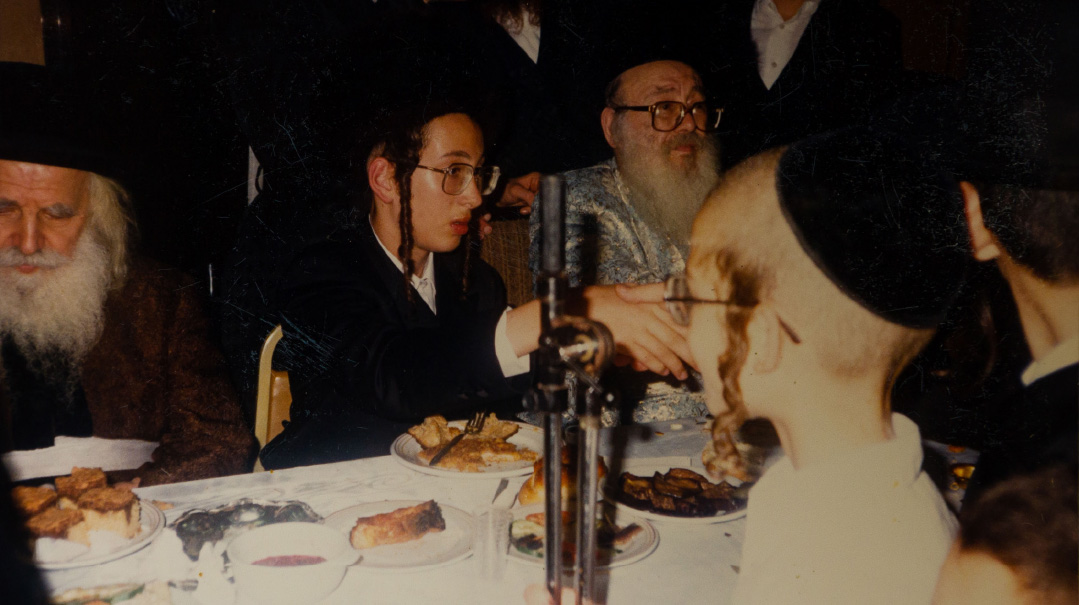
“This is the child that we prayed for.” The Spinka Rebbe at Rav Abish Meir’s bar mitzvah, the simchah everyone felt drawn to attend
T
he Rebbe was a young child at the levayah, and quite anxious about losing his father in the huge crowd. He held onto his father’s hand tightly — how would he know that these would be their final hours together?
They waited among the thousands, near the mikveh where the taharah was conducted for the tzaddik, and where Rav Eizik merited one last zechus: He was called to enter the taharah room to take leave of the tzaddik he so loved. It was only a separation of a few hours, until they would meet again in the mesivta d’rakia.
“Right after the kevurah,” the Rebbe relates, “my father went back to the taharah room. It was hard to get close as police stood and blocked the entrance, but my father insisted on returning to immerse in the mikveh in which they had purified the body of the Baba Sali. It was his final immersion before his death. My father sanctified himself in the Baba Sali’s mikveh.”
Now they needed to get home, standing among the thousands who were looking for ways to get back to Bnei Brak. They met Reb Yehoshua Blass, a renowned baal chesed, who offered them a ride. Already seated in the car were Rav Yehoshua Margalit and Spinka Rosh Kollel Rav Yaakov Berkowitz.
One other person asked to join the group as well: Rav Shmuel Auerbach — but the car was full. “And the truth is, it makes no sense how my father offered Rav Shmuel Auerbach to enter a car that was already full,” the Rebbe says. “But anyone who knew my father knew that he never made calculations. If there would be a need to crowd closer together so another Yid could benefit, he would do that all the way. Indeed, Rav Shmuel later related that he spent more than two hours looking for a ride.
“We set out, and I was squashed next to the adult passengers,” the Rebbe recalls. At the exit of the city, his father asked them to stop. “We went into a kiosk and my father bought a large bottle of Kankal cola and offered a cup to all the passengers. We all made a Shehakol, the last brachah that they made in This World.”
In time, the young boy would learn the secret of the brachah. “In the holy seforim it is brought down that before they pass away from this world, tzaddikim recite Shekahol in This World, and the brachah acharonah in Olam Haba.”
The Shehakol and the cup of cola are the last memory he has. A few moments later, the car crashed head-on into an Egged bus.
T
he next morning, this is what the papers had to say: Egged bus driver Yigal Dayan of Ashkelon, who was involved in the fatal accident in which four passengers of a Subaru were killed, sustained blows to his head and scratches in his eyes from glass shards. From his hospital bed in Ashkelon, he related how there was a long column of cars not moving, when a Subaru bypassed the traffic and continued driving straight toward the front of the bus. He had a few frightening seconds to decide where to direct the bus, which was carrying over 20 passengers.
“I saw a huge convoy of cars in front of me, and then came the rapid braking and the inevitable collision. The result was horrific: All the passengers of the little car were smashed. Why did such a terrible thing happen?” asked Yigal Dayan through a veil of tears.
There was a mass levayah in Bnei Brak. The levayos of the other three victims took place first, but Rav Eizik Weiss’s levayah was delayed: They were waiting for his father, the Spinka Rebbe, who was in America.
“They told my zeide that my father had been injured in a car accident, and that his condition was serious. He traveled to Eretz Ysirael with his sons, my uncles, and during the flight, he noticed that they were not davening, conducting themselves as onenim. He understood and tore kriyah.”
Even before the levayah, the Spinka Rebbe traveled to the hospital to visit his comatose young grandson. “He spoke to the professor and asked about my condition,” says Rebbe Abish Meir. “The doctor picked up his hands and said there was no chance for my survival, but my grandfather was adamant: ‘That’s what you say, but HaKadosh Baruch Hu will show us otherwise.’”
At the fourth anguished levayah in Bnei Brak, the bereaved father stood and wept as he eulogized his son. And then he called out to the thousands: “I ask you to have compassion. Daven for my grandson that he live and recover. Ribbono shel Olam,” he cried, “You observe Your Torah, and the Torah says ‘oso v’es beno lo sishchatu beyom echad,’ he and his son you should not slaughter on one day. If so, how can You kill the father and son on one day?”
The young orphan became Klal Yisrael’s child. Everyone spoke about him and offered tefillos for his merit. While Tehillim rotations took place all over Eretz Yisrael and the world, the new widow reached out to Rebbe Moshe Mordechai of Lelov zy”a, who replied: “Do not worry. Your son will return home and he will be healthy.”
Sometime later, she came in again and pleaded for a promise. The Rebbe repeated: “I already promised you that he will be healthy.” When she left, he said to his gabbai, Reb Simcha Krakowski, “This widow has broken me to pieces.”
That day, Abis Meir woke up from the coma and regained consciousness. But he was in excruciating pain. His mother, who couldn’t bear to watch him suffer like that, once again went to the Lelover Rebbe in tears.
“He is screaming?” the Rebbe said. “He will yet scream to the Ribbono shel Olam. Vayitzaku el Hashem. He will cry out for Bnei Yisrael. I promised you he will be healthy. You will see that he will be healthy, will marry, and will take the place of his fathers.”
It took time, but the child slowly recovered. Three months later, at the beginning of Iyar, he managed to stand on his feet, in complete defiance of the doctors’ predictions. Three years later, his bar mitzvah was, as the Yeshuos Moshe of Vizhnitz said, “Klal Yisrael’s simchah,” even instructing his chassidim to come wearing their shtreimels. “A child for whom all of Klal Yisrael davened, and for whom we merited to see the tefillos accepted, is like family.”
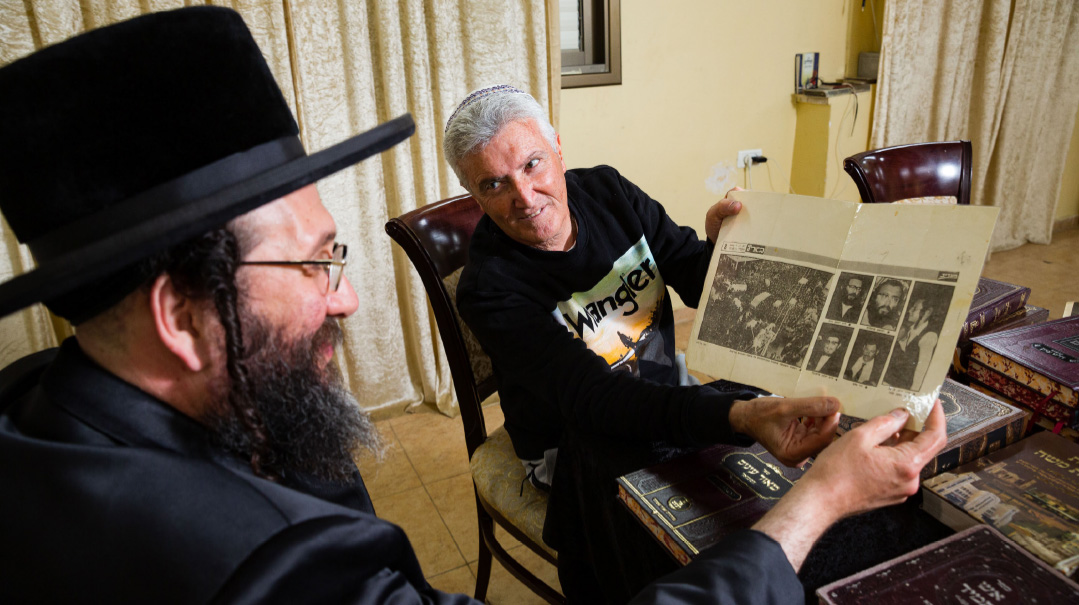
W
hile Shimon Yifrach spent years wondering about the boy he pulled from the clutches of death, the Spinka Rebbe and his family, too, wanted to find and meet his grandson’s savior. They too had been searching for the man who had saved Rav Eizik’s bechor. The Spinka Rebbe even wanted to invite him to the bar mitzvah, but he seemed to have just disappeared.
Until that day so many years later, when, in the merit of the Baba Sali, child and rescuer were finally reunited.
Since that day 15 years ago, Shimon Yifrach and Rebbe Abish Meir — known as a sensitive and sought-after baal eitzah who knows first-hand about trauma and crushing loss — never miss an opportunity to get together. And it was a privilege for us to be there with them for a recent reunion.
“We looked for you for a long time,” the Rebbe tells Shimon. “Where were you hiding all those years?”
Shimon reveals a secret: The night of the accident was Shimon Yifrach’s last with MDA. “That night I came home — my wife and I had just been married a short time — my clothes were soaked in blood and my eyes wild with panic. I couldn’t fall asleep. I told my wife I’m not doing this anymore. I’d seen so much pain and trauma, but this is what finally broke me.”
Shimon has been a bus driver for the last few decades, and admits that he’d often pass the spot of the accident, wondering how the end turned out.
Today they look at each other for a long moment, and their eyes say it all. In Shimon’s eyes there is still wonder, while the Rebbe’s eyes say thank you. “And still,” Shimon says later, “sometimes, it seems like a dream to me. As someone who saw him then — I still cannot believe what I am seeing now.”
(Originally featured in Mishpacha, Issue 958)
Oops! We could not locate your form.







